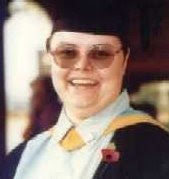The story opens with three Oxford men who are brought in for questioning as the result of a Professor's death in London in March 1917. As a result they become companions on a voyage through the Archipelago of Dreams, after one of the men is named as the Caretaker Principia for the Imaginarium Geographica. During their journey they defeat the usurper to the Silver Throne, and restore the rightful king. The three men are Jack, John and Charles. Their exact identities aren't revealed until the end of the book (although I'd already found it out by accident), along with the premise that their journey later became the germ of their subsequent fiction. The men are C S Lewis (Jack), Charles Williams and J R R Tolkien. And right there is where I hit a problem with this book. I am a huge fan of Tolkien's works and I know a good deal about his life as well as his books, and he was never, ever called "John". As a boy he was known as "Ronald" (his second name) and as a man he was known as "Tolkien" (or "Tollers" to his friends). There is the fact that Tolkien, Lewis and Williams never met until after the First World War - and the fact that Owen's "Jack" talks of considering joining up, but by March 1917, Lewis was already a member of the Malvern Contingent of the Oxford University OTC, with the intention of doing his "bit" in the War.
One of the other things that I found massively irritating was that "John", who was being trained up for his role as a Caretaker by Professor Sigurdsson, claimed that he hadn't been getting on with his studies, because it didn't seem important: "Ancient languages that no one else could read..." (p. 70) - that is just so antithetical to the real life Tolkien, who adored languages, old and new, and invented so many of his own as well. He spent hours learning ancient languages (such as Gothic) when he should have been getting on with his assigned studies, that his assigned studies suffered. It was at this point that I almost abandoned this book.
I think this book might have worked better if Owen had created three entirely fictional characters for his main protagonists, rather than using three real life authors, two of whom are very well known indeed. I was puzzled by the fact that whilst "John" is the Caretaker Principia, his character is never very well developed, and certainly not as well developed as that of "Jack". And I found Owen's remarks about J M Barrie (who was supposedly an earlier Caretaker Principia) distasteful. All in all, I found this to be a reasonably good idea that was disappointingly executed. Here, There Be Dragons

